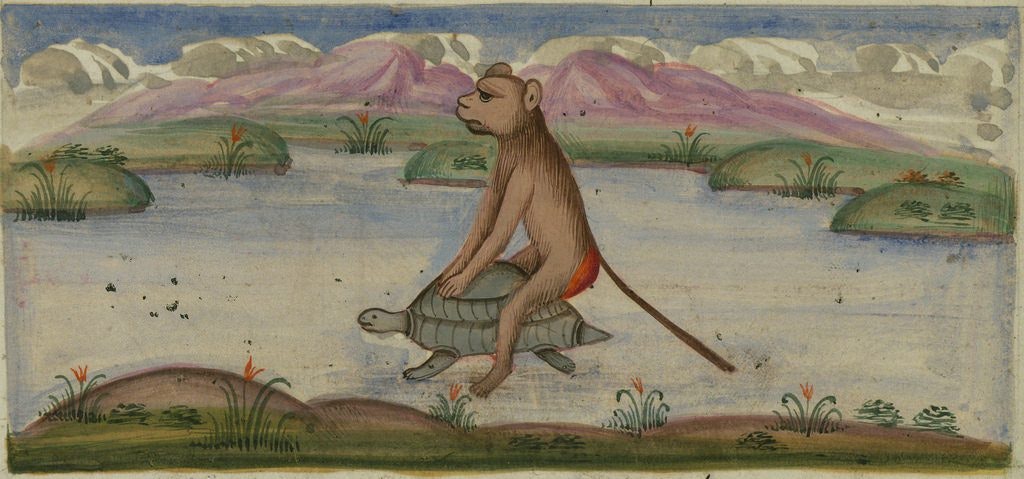
Illustrations from the Lights of Canopus (1847)
The Anvār-i Suhaylī or Lights of Canopus — commonly known as the Fables of Bidpai in the West — is a Persian version of an ancient Indian collection of animal fables called the Panchatantra. The tales follow the Persian physician Burzuyah on a mission to India, where he finds a book of stories collected from the animals who live there. Much like in the Arabian Nights (which actually uses several of the Panchatantra stories), the fables are inter-woven as the characters of one story recount the next, with up to three or four degrees of narrative embedding. Many of the fables offer insightful glimpses into human behaviour, and emphasise the power of teamwork and loyalty: one passage describes how a hunter catches a group of pigeons in a net, only for them to be saved by a mouse who gnaws through the rope. The version celebrated in this post hails from nineteenth-century Iran and is particularly notable for its exquisite illustrations — scenes of tortoise-riding monkeys, bird battles, conversing mice, delicate purple mountains — 123 in total. The artist behind the images is not mentioned, but the creator of the equally elegant nasta’liq style writing which they serve, is named by The Walters Art Museum (who hold the manuscript) as one Mīrzā Raḥīm.
Oct 24, 2017









